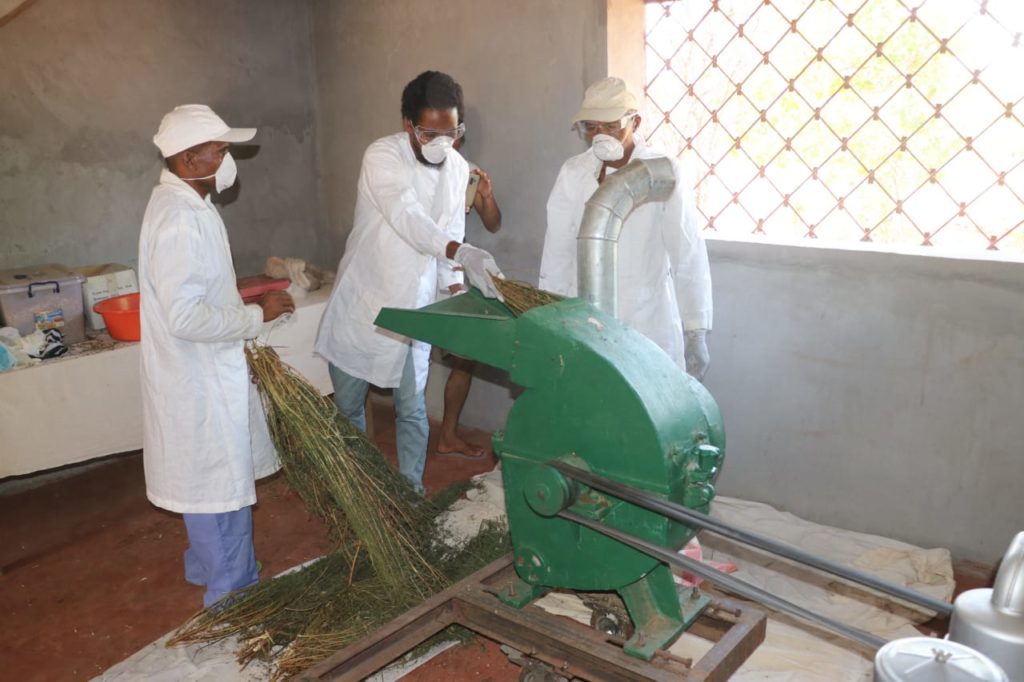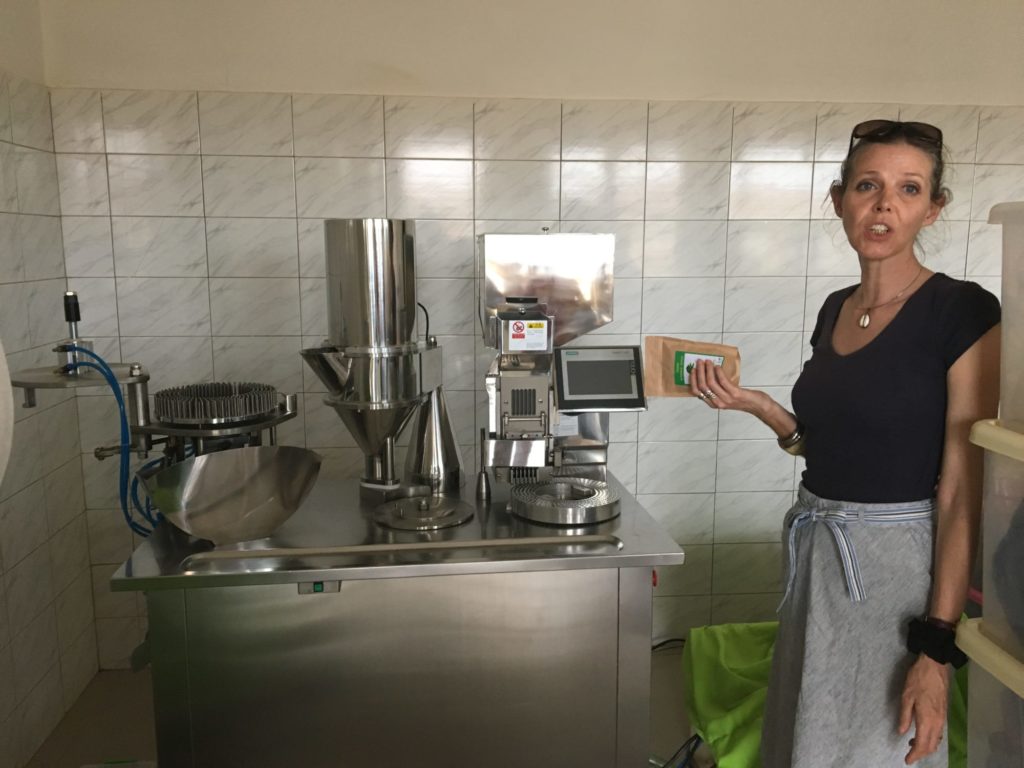Powder Production
Download in pdfPowder is extremely susceptible to contamination by mould and bacteria. It is highly sensitive to moisture and grinding into fine particles considerably increases penetration of micro-organisms and oxidation of the active molecules!
We recommend that only Artemisia annua and Artemisia afra be used in herbal teas.
However, powder is useful and effective for the production of capsules and tablets, in combination with food and even in production of suppositories.
Before handling, hands must be washed thoroughly with soap, equipment and all utensils must be clean and dry, and disinfected. (White spirit vinegar can be used. 90° alcohol does not destroy everything and bleach is dangerous for health if it is not rinsed thoroughly! For a natural solution, use 5L of water with 10 ml of palmarosa essential oil, 10 ml of tea tree essential oil and 10 ml of grapefruit seed extract).
Anyone handling plants must wear a clean and dry gown, mask and disposable gloves.
Refer to “Personnel” and “Equipment” sections of WHO “Guidelines on Good Agricultural and Collection Practices (GACP) for medicinal plants” for more details on hygiene standards and for the processing facility.
Particular care must be taken when processing into powder form to avoid any risk of contamination.
the dried crop to remove blemished, mouldy and damaged plant material as well as soil particles, stones and other foreign matter [1]
There is a wide variation in stem (red, green and brown) and leaf (green and brown) colours that are not indicators of quality.
leaves and stems with a pestle or with a conventional hammer mill with 16 or 24 hammers to obtain the finest possible segments.
NB: Parts of the central stems that are too thick for grinding (1 inch thick) can be used as incense sticks with antiseptic, purifying and mosquito repellent properties.
if necessary, the ground material in hermetically sealed containers in a cool, ventilated and shaded location.
Care must be taken to avoid overheating (of the shredder or any other method of grinding) as this causes the loss of volatile molecules and therefore reduces the efficacy of the Artemisia!

with a fine sieve (maximum mesh size 2 mm) to obtain fine powder to fill capsules correctly or to mix into honey.
the fine powder in hermetically sealed jars and keep in a cool, ventilated and shaded location.
the jars of fine powder in the freezer for 3 days to ensure that any insect eggs are destroyed. Jars must be tightly closed and airtight so that any condensation only occurs on the outside and does not re-humidify the Artemisia.
leave the jars out of the freezer for about 24 hours until the temperature is raised.
the powder in clean, dry and preferably new small jars or sachets [1-2].
Use kraft paper accepted for food hygiene or food grade plastic and close tightly with tape, knot or other reliable system.
Capsules
Capsules come in several sizes (#0 small, #00 medium and #000 large) and must be made of vegetable matter (without animal gelatine). They are bought empty, closed and supplied with a capsule filler.
#0 capsules contain about 0.25g of powder and are the easiest for children to swallow, #00 capsules contain about 0.5g and #000 capsules contain 0.8 to 1g depending on the fineness of the powder and how compact it is.
To use a basic capsule filler, open the capsules, place the large part in the small holes of the filler, fill the capsules with powder (by pouring powder on the filler and scraping with a ruler), tamper twice to compact powder (with a clean nail, for example) and close the capsule with the small lid. Semi-automatic capsule fillers and machines are also available.
ALL materials used for packaging or coming into contact with the powder must be non-polluting, clean, dry and in good condition and comply with quality standards for the medicinal plant materials concerned [1].
Reusable packaging materials should be thoroughly cleaned and dried before reuse [1].
Store in a clean, dry and shaded place, free from pests, inaccessible to livestock, domestic animals and other sources of contamination! [2]

Bibliography:
1. World Health Organization. WHO guidelines on good agricultural and collection practices (GACP) for medicinal plants 2003.
Available at: : https://www.who.int/medicines/publications/traditional/gacp2004/en/
2. World Health Organization. WHO monograph on good agricultural and collection practices (GACP) for Artemisia annua L. 2006.
Available at: http://www.who.int/malaria/publications/atoz/9241594438/en/










